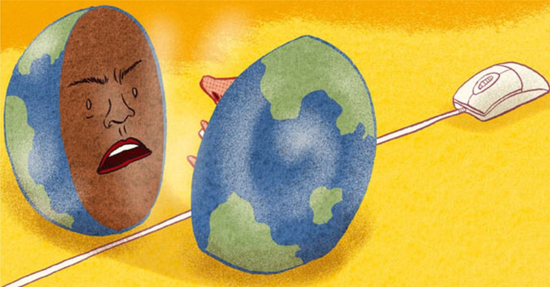
The digital divide refers to the unequal distribution of access to technology and the internet between different populations, often based on socio-economic status, geographic location, and other factors. In low- and middle-income countries (LMICs), this divide can have significant impacts on social and economic development.
Social Digital Divide
On the social side, limited access to technology and the internet can result in a lack of connectivity, information, and opportunities. For example, people who live in rural areas or have low incomes may be less likely to have access to online educational resources, which can limit their ability to acquire new skills and knowledge.
The lack of access to technology can also make it difficult for people in LMICs to participate in online communities and to connect with others who have similar interests or experiences.
Economic Digital Divide
On the economic side, the digital divide can limit the ability of individuals and businesses in LMICs to participate in the digital economy. For example, small businesses may struggle to compete with larger companies that have greater resources and access to technology.
This can limit their ability to reach new markets, sell their products and services, and grow their businesses. The digital divide can also limit the ability of workers in LMICs to participate in the global workforce and to take advantage of remote work opportunities.
Digital Divide Impact
The digital divide can create a vicious cycle, in which those without access to technology and the internet are left behind, unable to acquire the skills and knowledge necessary to participate in the digital economy and to achieve economic and social progress.
It is therefore important for governments, international organizations, and private sector companies to work together to close the digital divide in LMICs and to ensure that everyone has access to the technology and information they need to thrive in the digital age.
Please RSVP Now to learn more about USAID’s Digital Strategy at the Global Digital Development Forum on May 5. Our amazing agenda features an entire conference...
The coronavirus pandemic is creating rapid and dramatic shifts in the global economy and how business is transacted. This disruption is fueling fast-paced innovation...
Published on: Sep 30 2020 by Guest Writer - Comments Off on How to Responsibly Invest in Digital Development During COVID-19 Response
COVID-19 has shifted the world to increasingly rely on digital technology to survive; children are using online platforms to learn, people are using digital payment...
The Covid-19 pandemic has galvanised the case for universal internet access like never before, generating widespread agreement that the internet is too important...
I’ve been working to innovate education in Senegal for over ten years as the founder of CyberSmart Africa. These days, I see that COVID-19 offers a real-time...
Published on: May 07 2020 by Guest Writer - Comments Off on Jordan’s High-Stakes Educational Testing Challenges During COVID-19
Since the first COVID-19 coronavirus cases were reported in December 2019 the virus has spread to over 210 countries and territories around the world and 2 international...
Digitalisation will affect how people live and interact, but also learn and work. It will accelerate the changes in our society at a higher speed than ever before,...
Published on: Aug 14 2019 by Wayan Vota - Comments Off on The Main Drivers of Mobile Phone Ownership Will Surprise You
Mobile phone services were introduced in Nigeria in 2001. Yet, we still don’t really know who owns a mobile phone in Africa’s most populous country....
Caribou Digital turns five years old this year. While 2019 is a rapidly changing digital world, 2014 felt very different. Different elections, different technological...
Although more than four billion people now have some kind of Internet access, almost the same number remains without access worldwide. Smartphone sales and the...












